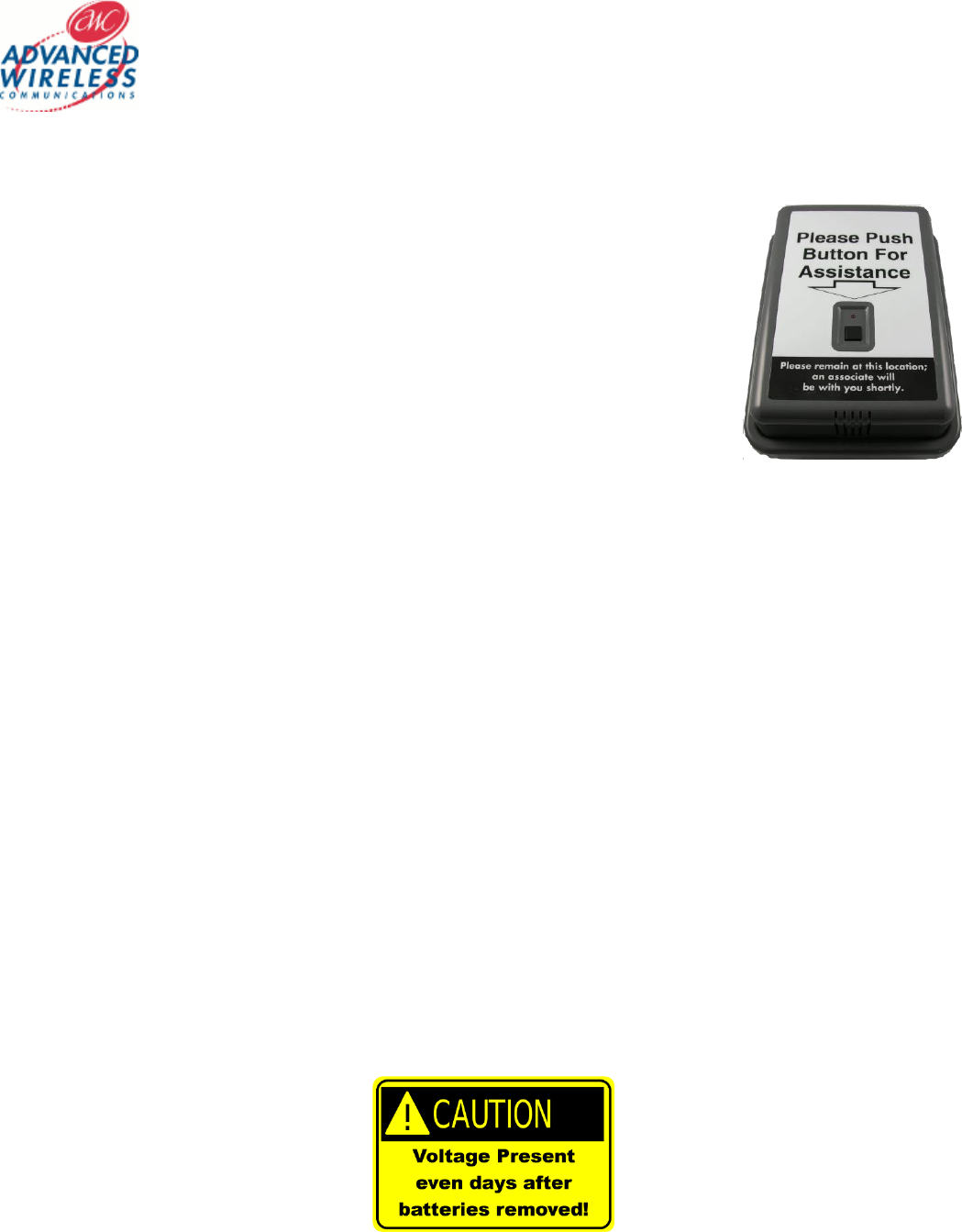User's Manual

AWCBX400 UHF Call Box
Owners Manual
Version 12.3.7
Copyright © 2012, Advanced Wireless Communications, All Rights Reserved
AWCBX400 Owner Manual Part Number: 4208-5521-5631
- 3 -
General Operation
The AWCBX400 is an indoor only device that can be mounted anywhere as no external
power is needed. The call box uses 6 batteries that will last 6-12 months on average
with normal usage. External power may optionally used to eliminate the need to
change batteries.
The call box has a call button on the front of the box that is used by the guest to request
assistance. When the button is pressed, a pre-recorded custom message is played for
the guest. In addition to the guest message, the UHF radio broadcasts a message to
staff carrying UHF two-way radios. The staff can then go to that area to assist the guest.
To cancel the request, staff members press a hidden button cancelling the request and
alert others, via two-way radio message, that no additional help is need.
With additional optional programming software, the call box can handle escalations if the wait time has exceeded limits
and play additional notifications to staff over the two-way radio.
The AWCBC400 call box can also supports external activations that can be used for a large number of alerts. Examples of
these are:
Temperature sensors
Motion Sensors
Water sensors
Panic Button
Any other device that can provide a closure
External alerts can be programmed with their own messages that are separate from the messages for the guest service
buttons on the call box itself. The external alerts require no additional software; they are part of the basic operation of
the call box. External alerting devices must be capable of providing a closure that will remain closed while the alert is
active and goes to open when reset.
This device complies with Part 90 of the FCC rules and regulations (FCC ID: Q9SAWCBX400) for operation in the United
States of America. An FCC license is required to operate the device. This device is capable of holding 16 separate
channels that can be selected via Dip Switches by the Owner/Operator.










